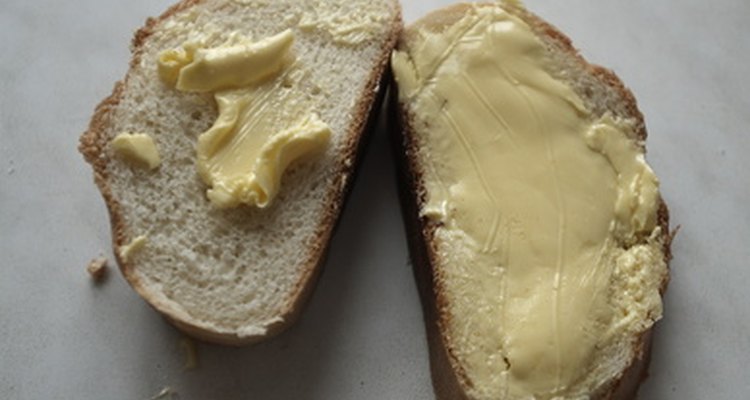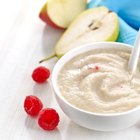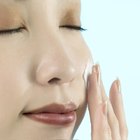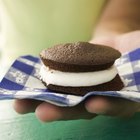
Cream contains fat and water molecules. When ripened and sheared, the fat particles combine to form an emulsion with some of the water particles. This emulsion is called butter.
Emulsion
Cream is made up of fat particles suspended in water. When the cream is agitated, it is converted to an emulsion of water particles suspended in fat. The emulsion that occurs between the fat and water in cream causes butter to form.
Ripening
Cream goes through two steps as it transforms to butter. First, the cream is ripened. In a commercial setting, cream is brought to the correct temperature in stages. At home, cream comes to room temperature. Ripening causes a membrane to form around the fat globules with a layer of crystallized fat particles behind the membrane.
Shearing
Shaking the cream, a process known as shearing, breaks the membranes that hold the fat crystals. The fat crystals merge and form clumps. Further shearing causes more fat globules to join together and separate from the water and proteins left over after the fat has been removed. With continued shaking the fat globules form a single clump of butter. The aqueous portion that remains is buttermilk.
Related Articles

How Many Calories Are in Cream of Wheat?

Why Can't You Use Ultra Pasteurized ...

Calories in a Tablespoon of Cream Cheese
Clotted Cream Vs. Double Cream
Cream vs. Creamer

How to Substitute Cream for Buttermilk

What Makes Cream Liqueur Curdle in ...

Why Does Some Alcohol Curdle Cream?

What Does Rennet Do in Ice Cream?

How to Make Scalded Cream

How to Thicken Cream Filling
How Can I Prepare Whipping Cream Ahead ...

How to Know When Handmade Whipping ...

What Are the Ingredients in Elizabeth ...

How to Bring Cream to a Boil

Can You Make Instant Pudding With Heavy ...

Things to Do With Over-Whipped Whipped ...

Differences Between Double Cream and ...

How to Make Whipped Frosting Without ...
What Do Bakeries Use in Their Whipped ...
References
- Food Materials Science: Principles and Practice"; Jose Miguel Aguilera and Peter J. Lillford; 2008
Writer Bio
Alissa Pond Mentzer worked in biotech research and educational publishing before becoming a freelance writer in 2005. She has contributed to textbooks for The Mcgraw-Hill Companies and National Geographic School Division and writes science articles for various websites. Mentzer earned a Bachelor of Arts from Rutgers University in anthropology and biological sciences.
Photo Credits
bread and butter image by Yuriy Rozanov from Fotolia.com